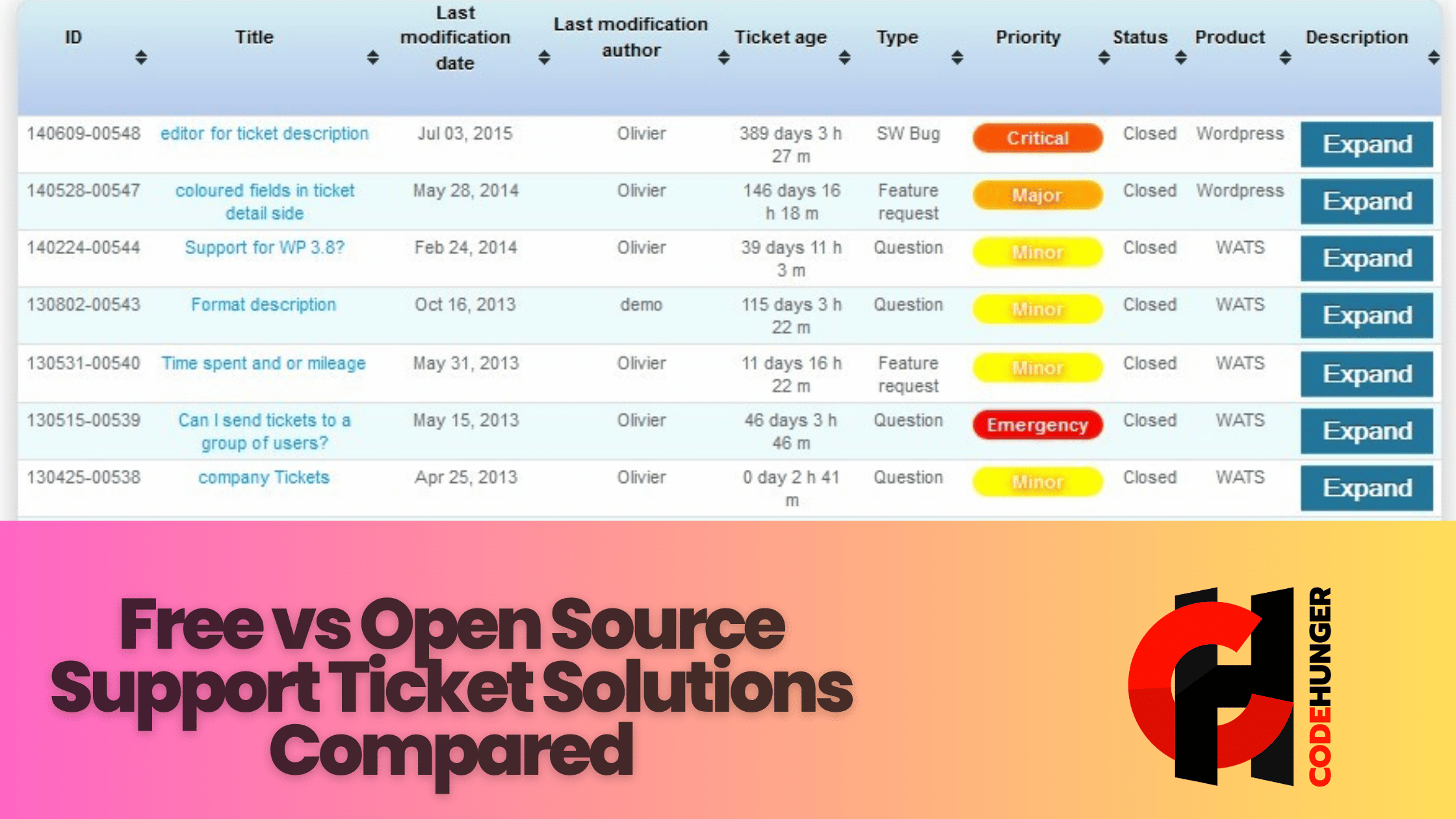Free vs Open Source Support Ticket Solutions Compared
In a world where customer experience can make or break your brand, support ticket solutions have become the backbone of effective customer service. Whether you're running a small startup or managing a large enterprise, the way you handle customer queries determines your brand's credibility and success.
But here's the kicker: Should you go for a free support ticket system or an open source one? At first glance, they might sound similar — both are budget-friendly, both avoid hefty license fees. However, the differences can significantly impact your scalability, customization, and overall customer support workflow.
Let’s dive deep into the pros, cons, and critical differences between free and open source support ticket solutions, so you can make an informed decision that matches your business goals.
Understanding the Basics: Free vs Open Source
Before we get into comparisons, let’s clarify what we mean by free and open source — because while they often overlap, they’re not always the same.
Free Support Ticket Solutions
These are systems you can use without paying a subscription or license fee. Think of tools like Freshdesk Free Plan or Zoho Desk Free Tier. They’re easy to set up, hosted by the provider, and perfect for startups or solo entrepreneurs.
Pros:
- No upfront cost
- Easy to implement
- Hosted by vendor (no server setup needed)
Cons:
- Limited features
- No control over code/customization
- Vendor lock-in risks
Open Source Support Ticket Solutions
These are platforms where the source code is publicly available, meaning you can download, modify, and host it yourself. Examples include osTicket, Zammad, and UVdesk.
Pros:
- Full customization
- No licensing fees
- Ideal for developers or tech-savvy teams
Cons:
- Requires hosting and maintenance
- Steeper learning curve
- Need technical expertise
Key Differences That Matter
Let’s break down the critical factors that can help you choose between the two options.
Cost Over Time
Free Systems
Initially, free systems seem cost-effective. But here’s a caveat — many free plans are feature-limited. As your business grows, you’ll likely have to upgrade to a paid tier to access automation, integrations, or analytics.
Open Source Systems
You save on licenses, but you’ll need to invest in hosting, development, and ongoing maintenance. This is cost-effective in the long term if you have the in-house skills or hire a dev team.
Customization and Flexibility
Free Support Solutions
Customization is minimal — you get what the platform gives you. You might be able to tweak colors, add custom fields, or choose pre-built workflows. But deeper integrations or UX/UI overhauls? Not going to happen.
Open Source Tools
Here’s where they shine. You can modify literally anything. Want to change how tickets are categorized? Integrate with a proprietary CRM? Build an AI chatbot? If it’s in the codebase or API, you can do it.
Security and Data Privacy
With rising concerns about GDPR and data compliance, this one’s a biggie.
Free Support Ticketing Tools
Hosted by vendors, your data is stored on their cloud. While major companies have solid security, you’re entrusting customer data to a third party. Not ideal for industries with strict compliance needs like healthcare or finance.
Open Source Platforms
You choose where and how to store your data — on-premises, private cloud, or self-hosted VPS. That means you control the encryption, backups, and access policies, which is a massive plus for regulated environments.
Scalability and Integration
Free Systems
Most free versions support only basic features and 1-3 agents. When you want CRM integration, multiple inboxes, or reporting dashboards, you’ll hit a wall — unless you upgrade.
Open Source Solutions
You can scale up as your infrastructure grows. Want to link it with Jira, Slack, or a custom ERP? With APIs and backend access, it’s fully possible. Some platforms like Zammad even support Elasticsearch and LDAP out of the box.
Support and Community
Free Tools
Support is usually community-based or email-only. You won’t get 24/7 support unless you're on a paid plan. For startups, this is okay. For critical customer-facing services? Risky.
Open Source Tools
Support depends on the community. Platforms like osTicket or Faveo Helpdesk have active forums, documentation, and GitHub repos. Some also offer paid premium support if needed — best of both worlds.
When to Choose What?
Let’s sum it up based on use case:
Go with Free Ticketing Solutions if:
- You’re just starting out with 1–3 agents.
- You need minimal customization.
- You want a simple, plug-and-play system.
- You lack technical resources or dev team.
Opt for Open Source Ticketing Systems if:
- You want full control over features and data.
- You need deep customization or self-hosting.
- Your company handles sensitive customer data.
- You plan to scale and integrate extensively.
Top Recommendations in Each Category
Best Free Support Ticket Tools
- Freshdesk (Free Plan) – Clean UI, automation basics.
- EasyTicket – CodeHunger
- Zoho Desk (Free Tier) – Good for small teams with basic reporting.
- HubSpot Service Hub (Free) – Includes CRM integration.
Best Open Source Ticketing Systems
- osTicket – Lightweight, popular, well-supported.
- Zammad – Modern UI, REST API, Elasticsearch.
- UVdesk – Great for eCommerce and multichannel support.
Conclusion
Choosing between free and open source support ticket solutions isn’t just about cost — it’s about control, flexibility, and future-proofing your support operations.
If you need speed, ease, and simplicity, a free SaaS-based tool will get you going. But if you're thinking long-term, and want complete control over your support infrastructure, open source is the smarter bet.
Still unsure? Try both! Spin up a demo of Zammad on a free VPS like Oracle Cloud, and test Freshdesk’s free plan. Your team’s experience will guide the best fit.









